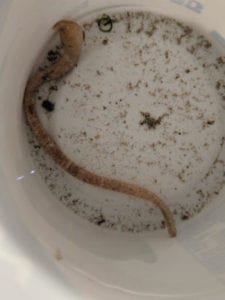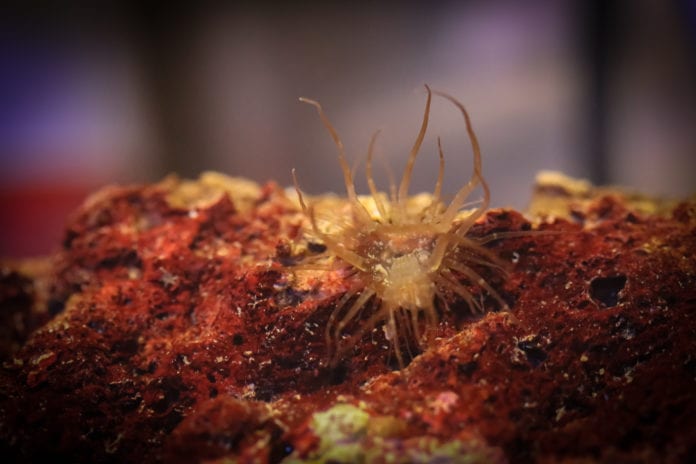Good Hitchhiker: Bad Hitchhiker: Neutral/Monitor
Sooner or later every reefer comes across stowaways. Some of these hitchhikers as they are referred to in the hobby are beneficial, while others are not. There are also other FOWLR and reef tank hitchhikers that are considered neutral. Whether you’re a beginner or advanced in the hobby it’s almost guaranteed that one day you’ll see something in your tank that will elicit a “what is that” reaction. Below is a list of common reef tank hitchhikers along with observations and eradication methods if applicable.
Aiptasia: Bad Hitchhiker
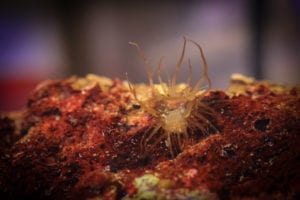
The dreaded Aiptasia Anemone is a hitchhiker capable of infesting a tank in a short period of time. Aiptasia are incredibly resilient as well as elusive. For their size they do have a potent sting, capable of injuring or killing fish and coral. Aiptasia reproduce at an extraordinary rate, either sexually or asexually. Eradication is difficult and frequently involves continuous attempts. If you find one large Aiptasia in your tank, chances are there are at least a dozen hiding within your live rock, sump, or at the base of some corals.
Eradication methods include chemical additives such as Aiptasia X or a natural solution like lemon juice. Certain filefish along with the Copperband Butterfly have produced varied results. After battling Aiptasia for almost a year, I found the most effective solution to be the Berghia Nudibranch.
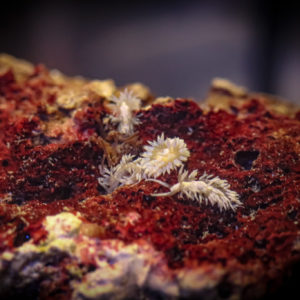
Amphipods: Good Hitchhiker
They look weird, but amphipods play an intrical part in a healthy saltwater environment. They provide food for fish fast enough to catch them and they eat leftover food and detritus.
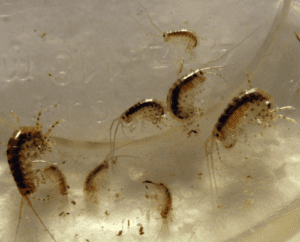
Asterina Starfish: Neutral/Monitor
Some have reported Asterina Starfish eating coral, however, this seems to be the exception rather than the rule. Most species are reef safe and are actually beneficial by eating diatoms, leftover food, algae, etc. They reproduce by fragmentation, so Asterina’s can overtake a tank fairly quickly. The easiest way to get rid of these common hitchhikers is manual removal once the lights are out. Severe infestations may require a natural predator such as a Harlequin Shrimp. Please note that the Harlequin Shrimp only eats starfish and will starve if not fed accordingly.
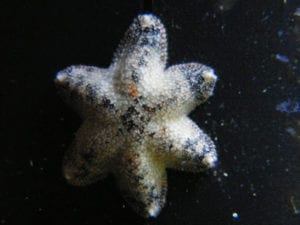
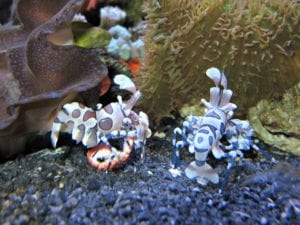
Bristle Worm: Neutral/Monitor
Bristle Worms have many beneficial roles in the saltwater aquarium. Aside from eating leftover food and detritus, they are excellent at stirring the sand bed. The only reason they are categorized as neutral/monitor is because they can grow rather large and I’ve seen them disturbing and stealing food from coral.
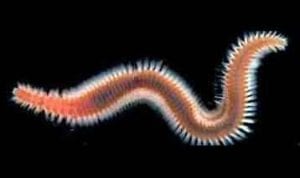
Fire Worm: Bad Hitchhiker
Not to be confused with its Bristle Worm relative, Fire Worms are voracious carnivores that will eat both motile and sessile invertebrates such as corals, crustaceans, and clams. Methods of eradication include specialized Bristle Worm traps as well as natural predators such as the Coral Banded Shrimp. Fire Worms are also capable of inflicting a painful sting. Remove with caution.
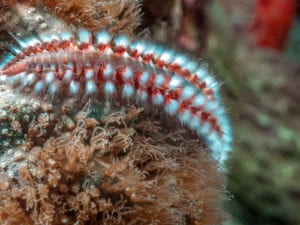
Vermetid Snail: Bad Hitchhiker
Vermetid Snails are common hitchhikers on frags and live rock. Although they don’t attack coral directly, they tend to grow on or near coral skeletons and can stunt growth. When feeding they also release mucus nets, which can irritate and eventually kill entire coral colonies. Manual removal is the most effective way or eradication using coral cutters to cut the base of the calcified shell.
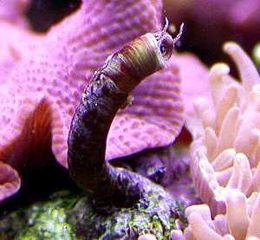
Spaghetti Worm: Good Hitchhiker
Spaghetti Worms are commonly found in the sand bed where they catch detritus with numerous tentacles. They are definitely a bencial member of your clean up crew.
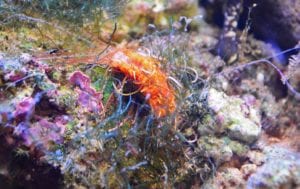
Polyclad Flatworm: Bad Hitchhiker
These hitchhikers are very hard to spot. You can usually find them on the skeletons on LPS corals, where they will lay their eggs. Eradication involves a multistep approach. The first step would be a Bayer dip, followed by gently brushing the skeleton of the coral to remove any eggs as a Bayer dip will kill adult Polyclad Flatworms, but not the eggs.
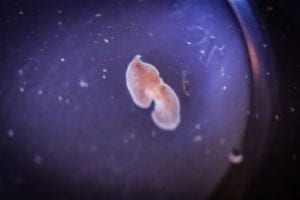
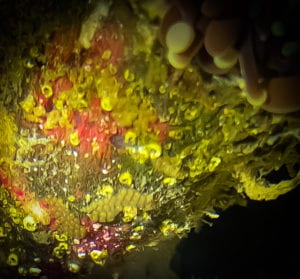
Sponge: Good Hitchhiker
These beneficial hitchhikers comes in a wide variety of shapes and colors. They are filter feeders and will generally be found in shady areas of your tank. If there is too much sponge in your reef tank, some Angelfish species such as the Regal Angelfish will routinely eat most sponges and tunicates.
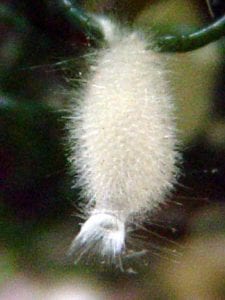
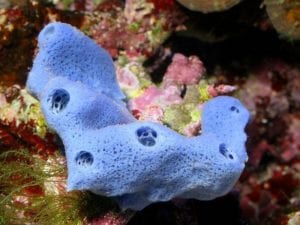
Spionid Worm: Neutral/Monitor
These worms build tubes made of sand grains. I put them in the neutral/monitor category because they can reproduce very fast and occasionally irritate coral with their double feeding palps.
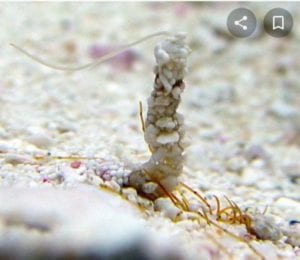
Ball Anemone: Neutral/Monitor
Ball Anemone’s are actually mushrooms that look like anemone’s. They are rather small and don’t reproduce at alarming rates. Based on experience I would classify them as neither beneficial or harmful.
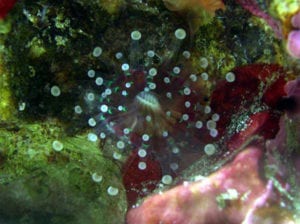
Majano Anemone: Bad Hitchhiker
Next to Aiptasia Anemones, the Majano variety is another pest anemone. They look similar smaller version of a bubble tip anemone. Lysmata wurdemanni Peppermint Shrimp is a natural predator along with certain Angelfish such as the Three-Spot Angelfish. Kalk Wasser is an effective way of eliminating Majanos. Please note, Berghia Nudibranchs will not eat Majano Anemones.
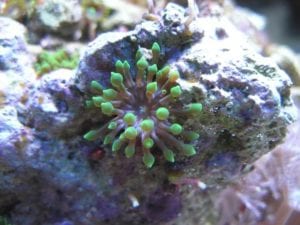
Stomatella Snail: Good Hitchhiker
These beneficial herbivores are fast moving and look more like slugs than snails. Stomatella snails are aggressive algae eaters and will help clear any system of micro algae.
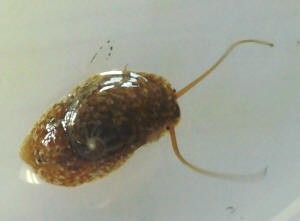
Sundial Snail: Bad Hitchhiker
Often confused with Collonista snails, Sundial snails are normally have a black and white pattern. They are voracious Zoanthid eaters. CoralRX is effective at removing these pests.
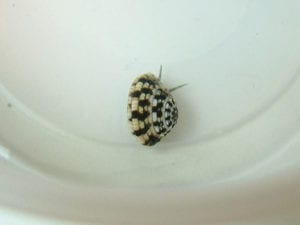
Limpet: Good Hitchhiker
Most hitchhiker Limpets are beneficial herbivores. Some species will consume SPS coral tissue.
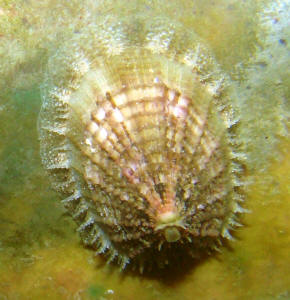
Hydroid: Bad Hitchhiker
Hydroids are more common to newer tanks and although they are considered bad hitchhikers due to their stinging capabilities, they tend to die off rather quickly.
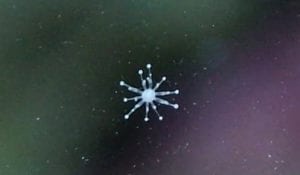
Copepods/Isopods: Good Hitchhiker
Copepods and most Isopods are essential residents of a healthy reef. They serve to clean the water column while simultaneously providing food for coral and fish.
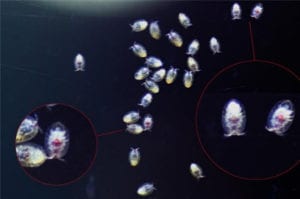
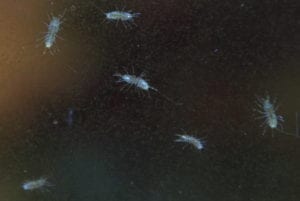
Ghost Flatworm: Neutral/Monitor
Ghost Flatworms aren’t particularly beneficial or harmful to any saltwater tank. They pretty much leave everything alone with the exception of copepods.
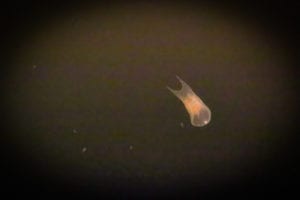
Acropora Eating Flatworm: Bad Hitchhiker
The name says it all. Wrasses and some Filefish are natural predators of this menace. Bayer dips will work for the adults while brushing with a soft bristle toothbrush will dislodge the eggs.
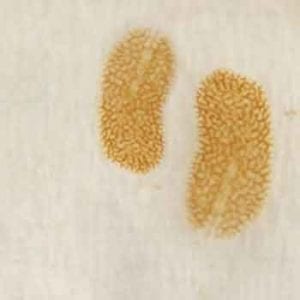
Bobbit Worm: Bad Hitchhiker
Bobbit Worms are capable of growing very large and eating just about anything. On top of that, they are incredibly hard to catch. Bristle Worm traps may work for smaller Bobbit Worms, however, manual removal is often necessary.
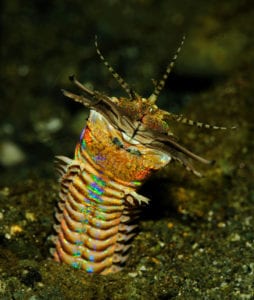
Mantis Shrimp: Bad Hitchhiker
These predators are capable of attacking other inverts and small fish. One tell-tale sign of a Mantis Shrimp is a clicking sound. These predators like to hide and are hard to find. The easiest way of removal is to trap them with food.
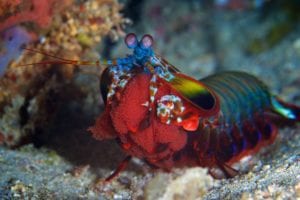
Gorilla Crab: Bad Hitchhiker
Known for eating Anemones, Clams and other inverts, the Gorilla Crab is an armored menace that will wreak havoc on any tank. They also tend to get large. Natural predators include triggerfish and pufferfish.
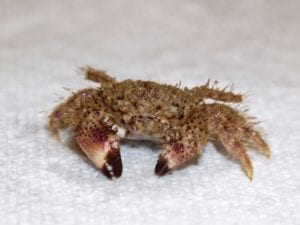
Brittle Starfish: Good Hitchhiker
One of the more common hitchhikers, the Brittle Star will actively stir up the sand bed and keep your tank clean by eating detritus and uneaten food.
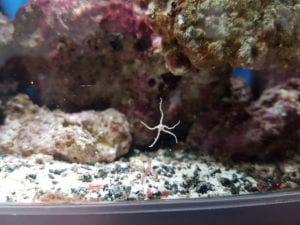
Comb Jellies: Neutral/Monitor
Comb Jellies are not true Jellyfish, but rather Ctenophores. They are often seen with starfish or leather corals, but are completely harmless.
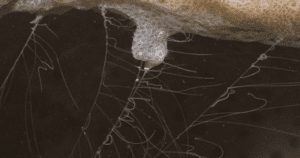
Red Planaria Flatworm: Bad Hitchhiker
These rust colored flatworms have the capability of reproducing at an astonishing rate. As such, they can quickly overtake an aquarium. Fortunately there are several control methods including Flatworm Exit or natural predators such as Six-Line and Leopard Wrasses.
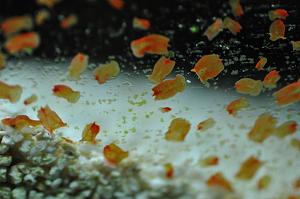
Spirorbis: Good Hitchhiker
They look like snails but are actually worms. These harmless filter feeders consume detritus, Phytoplankton and uneaten food. They tend to congregate in darker areas of the tank such as a sump or the tank plumbing.
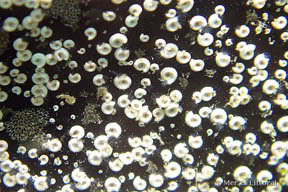
Feather Duster Worm: Good Hitchhiker
Harmless filter feeder.
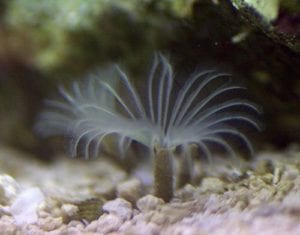
Chiton: Good Hitchhiker
The Potato Bugs of the reef tank, these little critters are harmless. They are actually beneficial as they consume film algae and leave everything else alone.
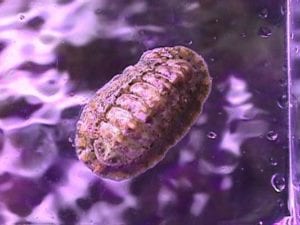
Zoanthid & Montipora Nudibranch: Bad Hitchhiker
The name says it all. Fortunately, there are several ways to get rid of adult nudibranchs. CoralRX, Bayer dip can eliminate the adults while the eggs need to be manually removed. Several species of Wrasses will also eat the adults and eggs including the Six-Line Wrasse, Melanurus Wrasse, or Yellow Coris Wrasse.
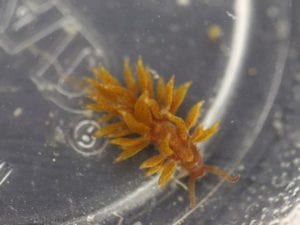
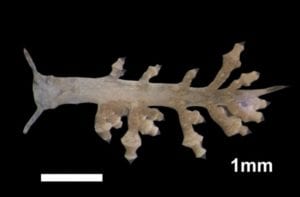
Creoland Isopod: Bad Hitchhiker
These critters will attach themselves to fish, much like a tick on a dog. A freshwater dip may provide relief and dislodge the parasite.
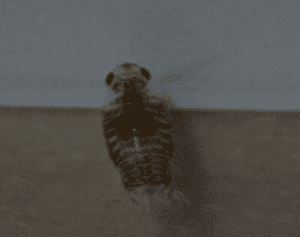
Medusa Worm: Good Hitchhiker
The Medusa Worm is actually a sea cucumber. They are beneficial particle feeders despite their appearance.
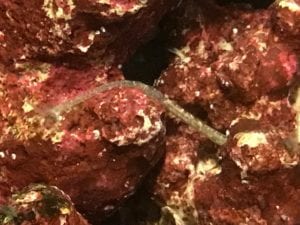
Zoanthid Spiders: Bad Hitchhiker
These pests like to stay hidden beneath Zoanthid Mucus. As such, traditional dip results are varied. The most proven method is manual removal with tweezers.
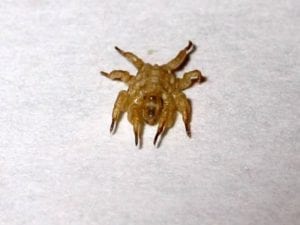
Red Bugs: Bad Hitchhiker
These flea like creatures are difficult to see and even more difficult to completely get rid of. Interceptor can kill the adults and eggs, however it’s very hard to find. Some have reported success with a Bayer dip. Natural remedies include wrasses and gobies.
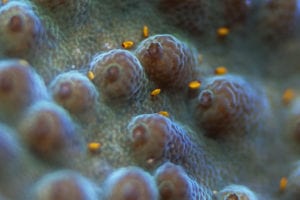
Collonista Snail: Good Hitchhiker
These smaller snails are beneficial algae grazers that usually only come out at night. The only downside to them is that they reproduce very fast and can clog up equipment.
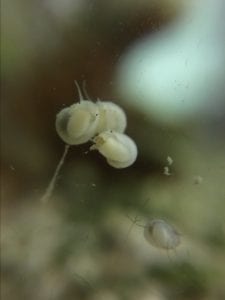
Tunicates: Good Hitchhiker
This filter feeder will sometimes get confused with Sponges. The easiest way to tell the difference is to see how many openings there are on the organism. Tunicates have two openings to filter water in and out.
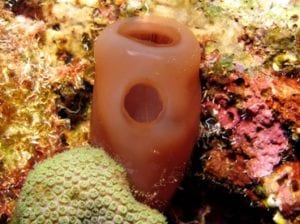
Peanut Worm: Good Hitchhiker
Harmless scavengers than will help keep your tank clean and are indicative of a healthy aquarium.
